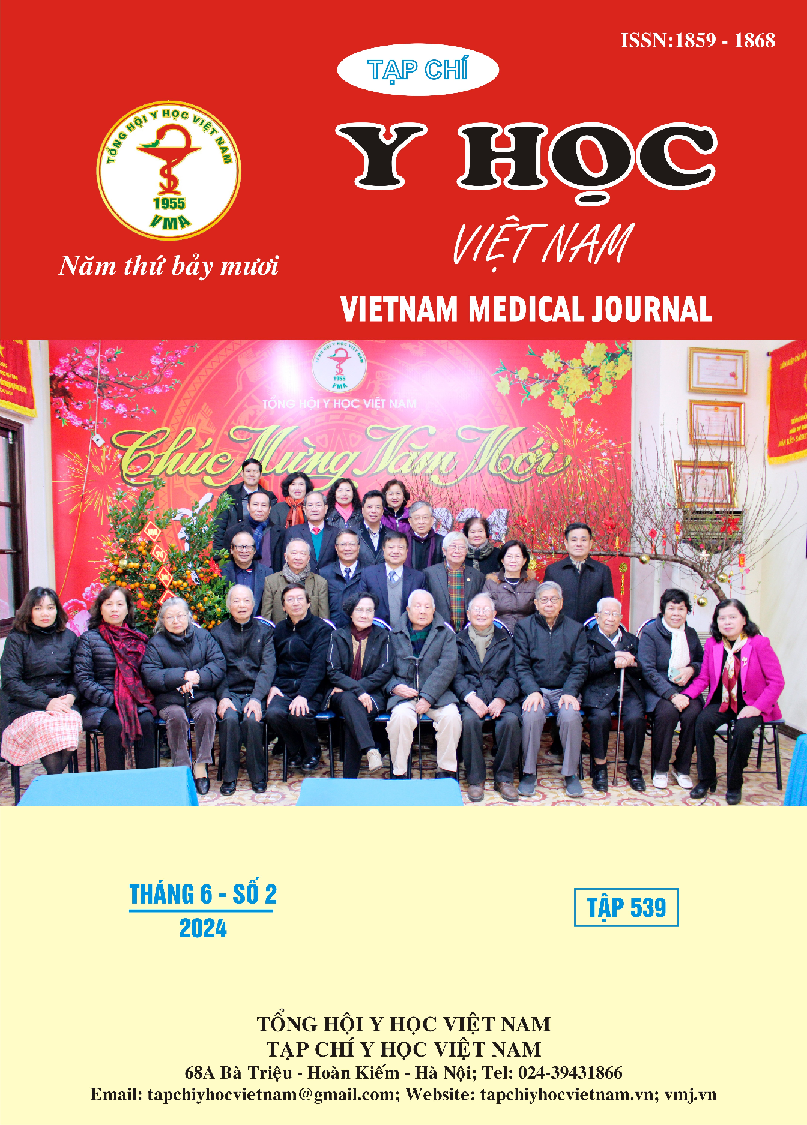STUDY ON ACUTE TOXICITY AND EFFECTS OF TD.0072 CAPSULES ON SOME HEMOLOGICAL INDICATORS IN EXPERIMENTAL ANIMALS
Main Article Content
Abstract
Objectives: Study the acute toxicity and determine the LD50 of TD.0072 capsules on mice. Research on the effects of TD0072 on some hematological indices of white mice. Subjects and methods: Swiss white mice, both breeds, healthy, weighing 25-30 g provided by the National Institute of Hygiene and Epidemiology. Study of acute toxicity and determination of LD50 of TD.0072capsules on mice orally by Litchfield-Wilcoxon method. Research on the effects of TD0072 capsules on some hematological indices and of mice causing cirrhosis by intraperitoneal injection of CCl4. Results: White mice were given TD.0072 capsules from the lowest dose to the highest dose. The group of mice drank up to a dose of 0.25 ml/10 g, 3 times in 24 hours of concentrated solution. It was observed that the doses of TD.0072 capsules showed no signs, no unusual symptoms appeared during the period. 72 hours after drinking. From there, the maximum tolerated dose (always 50% less than the fatal dose) of TD.0072 capsules is calculated as: 75 capsules/kg. Hematological indices did not improve in the TD0072 oral batches compared to the model batches (p>0.05). Silymarin dose of 140 mg/kg significantly increased the number of red blood cells, hemoglobin and hematocrit compared to the model lot (p<0.001). Conclusion: The LD50 in mice of oral TD.0072 capsules has not been determined. TD.0072 capsules showed no signs of acute toxicity in mice, administered orally at a dose of 75 capsules/kg (78.12 times the expected dose). TD0072 dose of 5.184 g/kg (3 times the dose). expected to have clinical effects) tends to improve hematopoietic function in mice recovered after causing cirrhosis with CCl4, but the difference is not statistically significant (p>0.05 ).
Article Details
Keywords
acute toxicity, hematology, TD0072.
References
2. Bích, Đ. H., Tập, N., Hiển, P. V., Toàn, T., Lộ, V. N., Mân, P. K.,... & Chung, Đ. Q. (2006). Cây thuốc và động vật làm thuốc ở Việt Nam, tập I, II. Nhà xuất bản Khoa học và Kỹ thuật.
3. Đỗ Trung Đàm (2006), Phương pháp ngoại suy liều có hiệu quả tương đương giữa người và động vật thí nghiệm. Phương pháp nghiên cứu tác dụng dược lý của thuốc từ dược thảo
4. Bộ môn Hoá sinh, Trường Đại học Y Hà Nội, (2001), Hoá sinh, Nhà xuất bản Y học, tr. 646-685
5. Tsochatzis E.A., Bosh J., Burroughs A.K. (2014). Liver cirrhosis, Lancet, 383(9930), pp 1749-1761
6. Gerhard Vogel H. (2016), Drug discovery and evaluation Pharmacological assays, Springer.
7. World Health Organization (2013),Working group on the safety and efficacy of herbal medicine, Report of regional office for the western pacific of the World Health Organization.
8. Scholten D, Trebicka J, Liedtke C, Weiskirchen R. The carbon tetrachloride model in mice. Lab Anim. 2015;49(1 Suppl):4-11.


